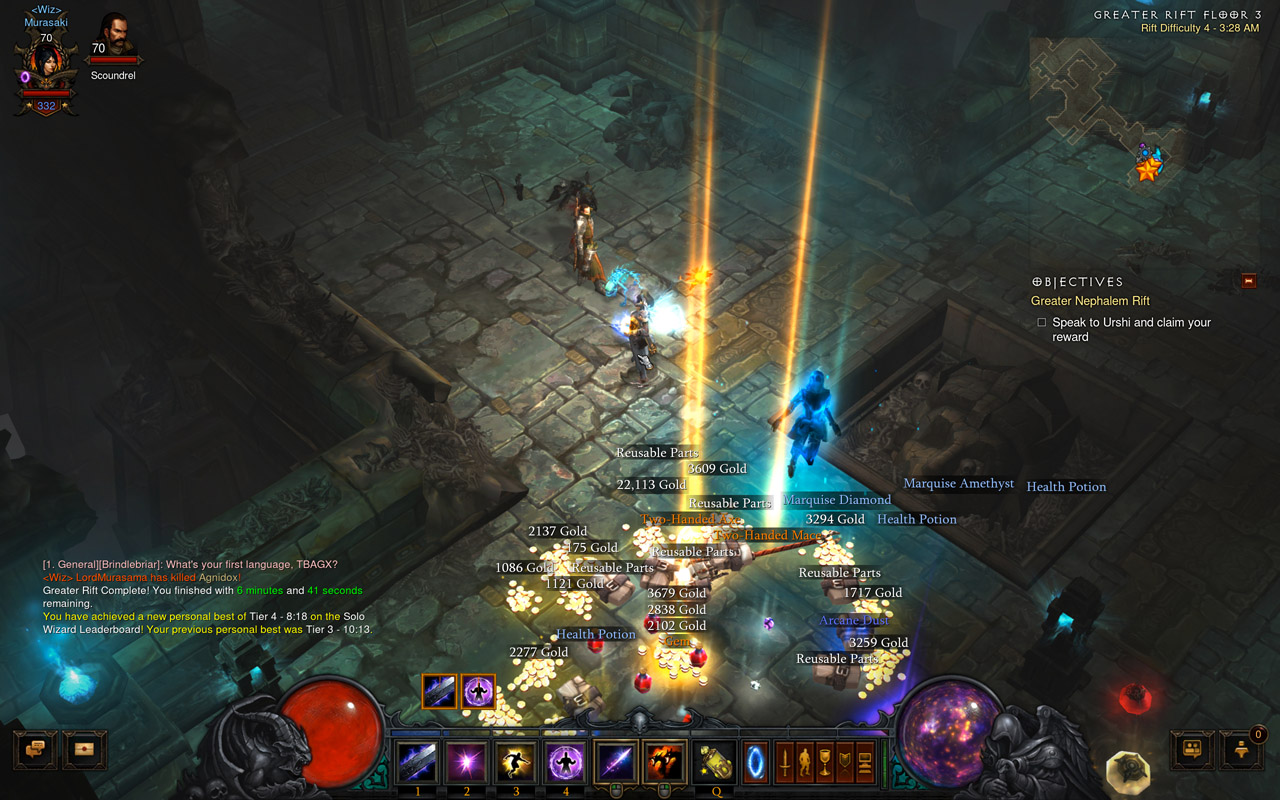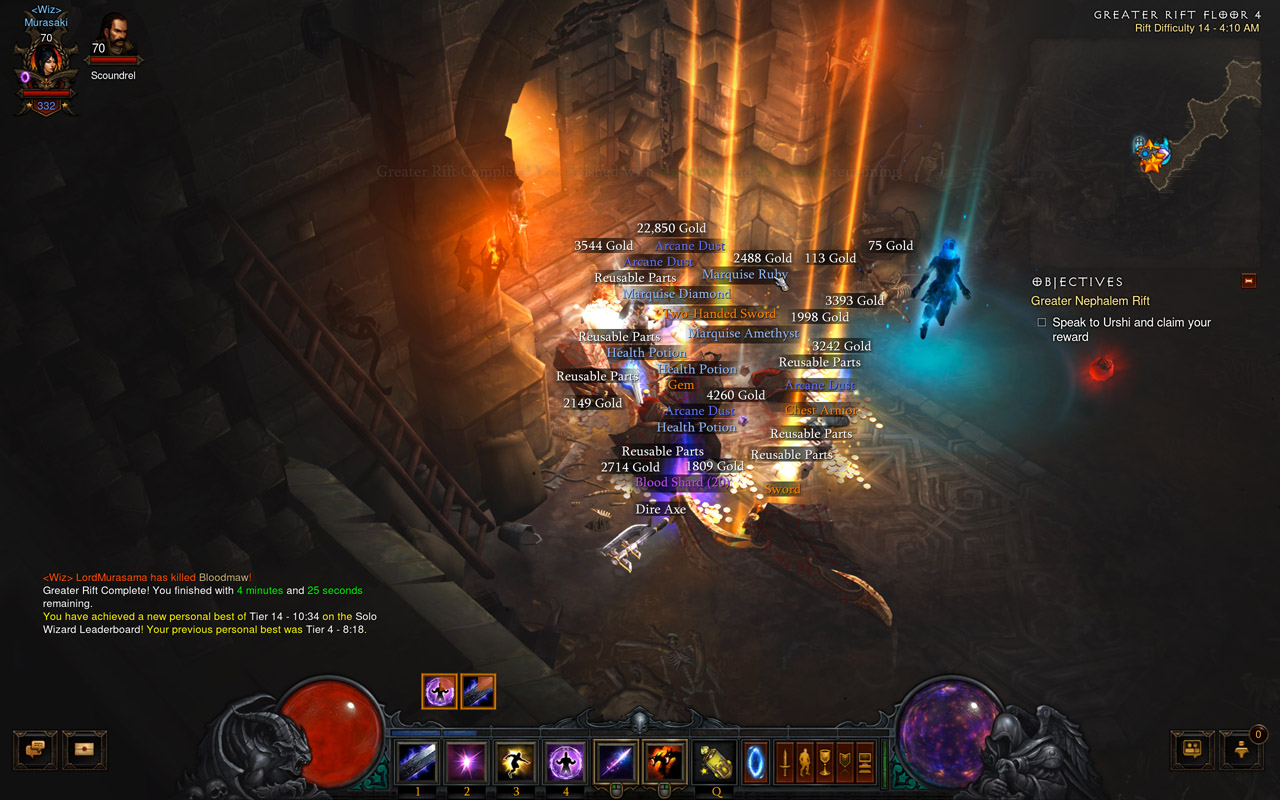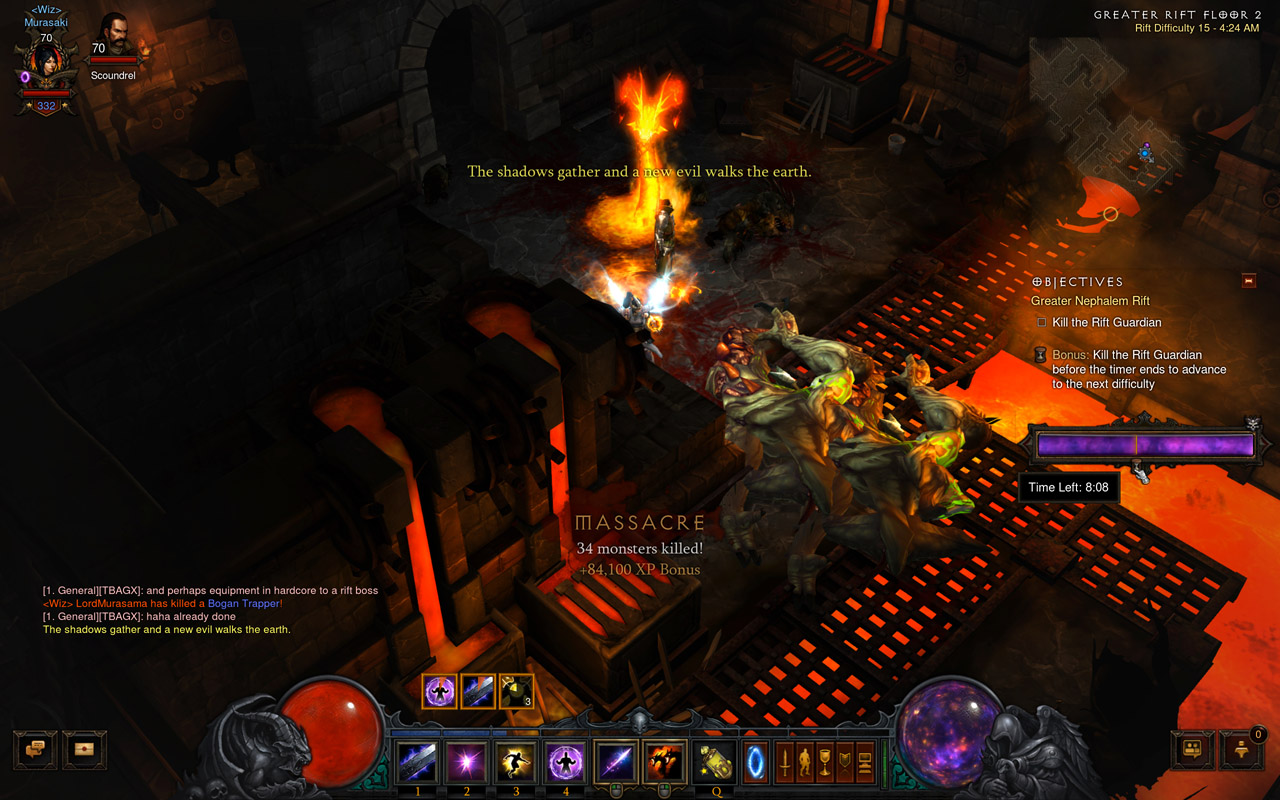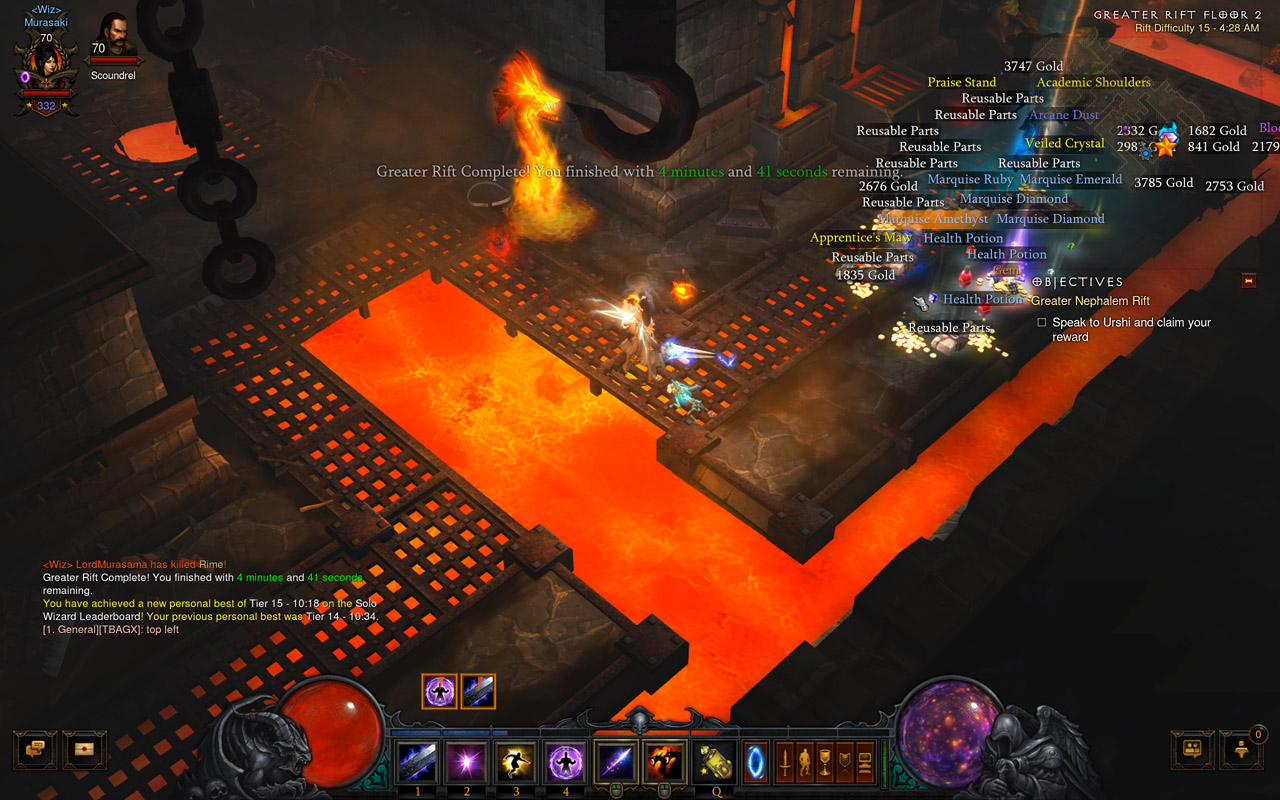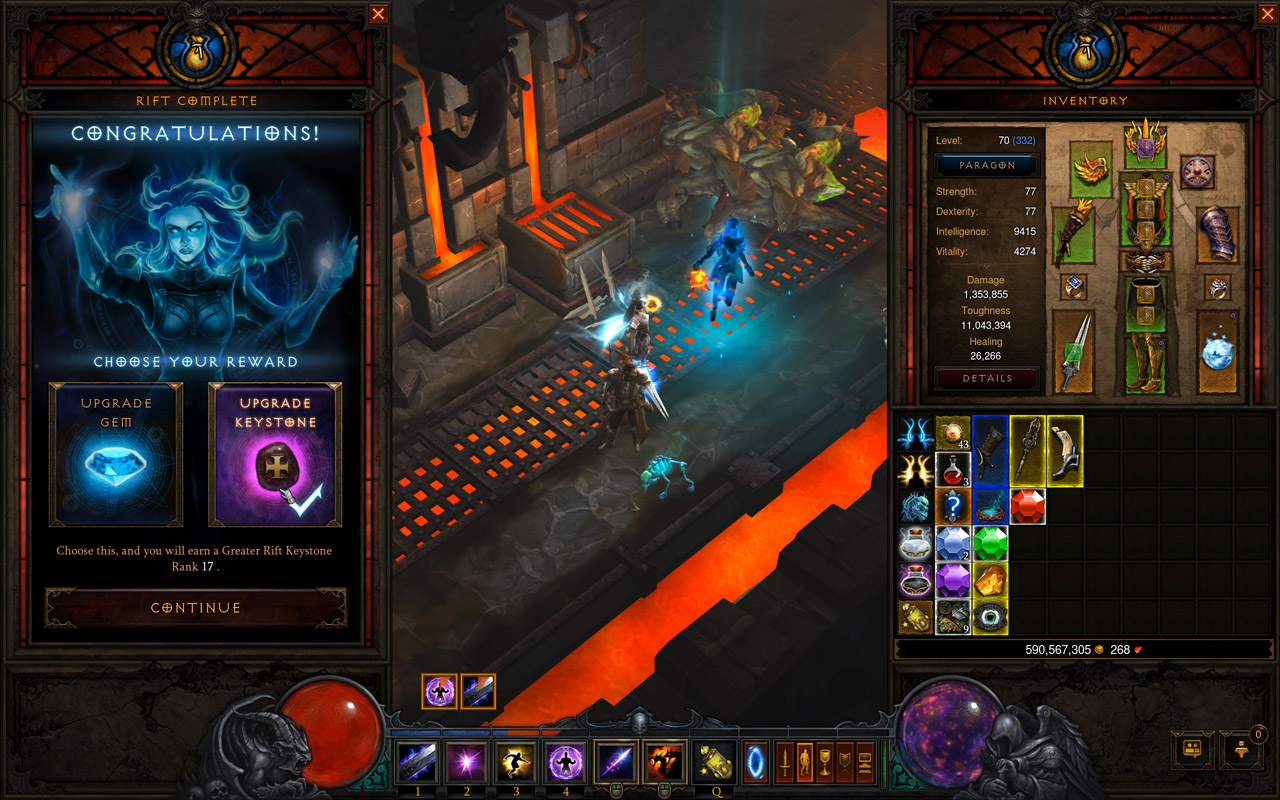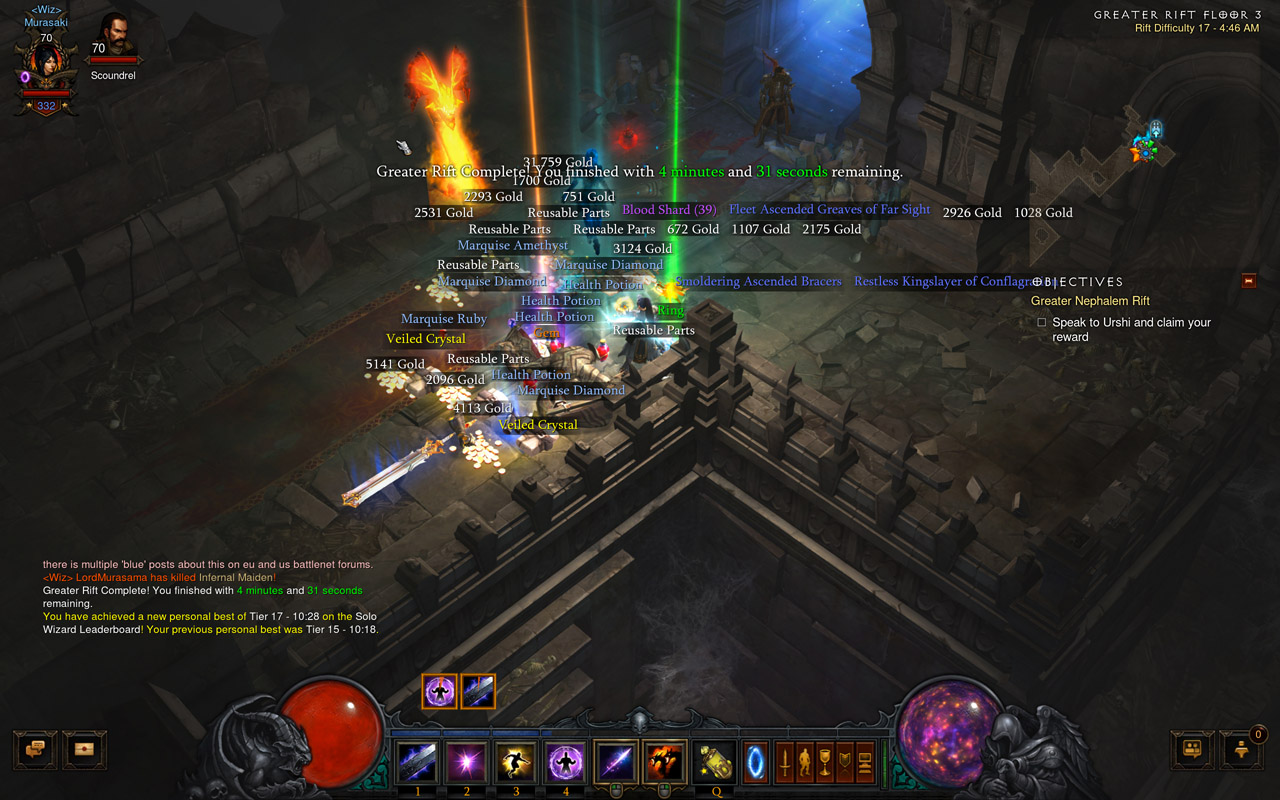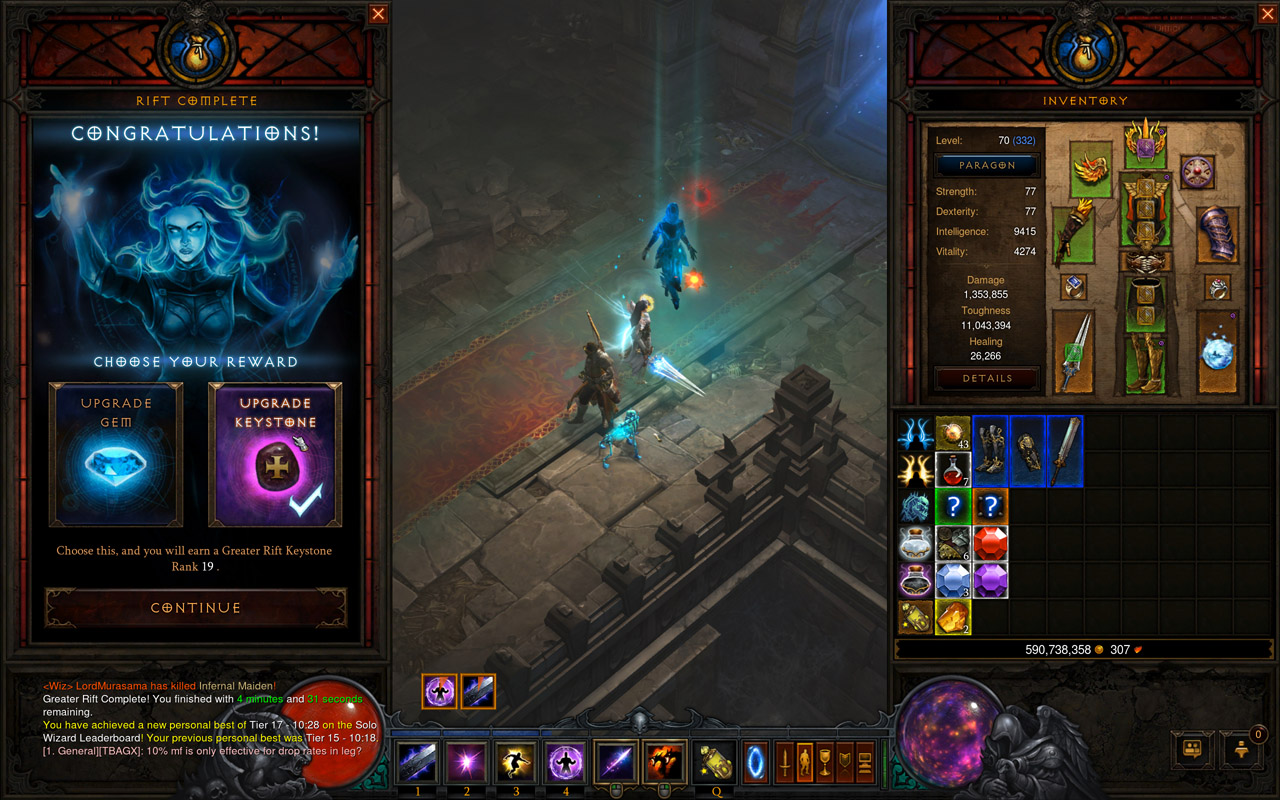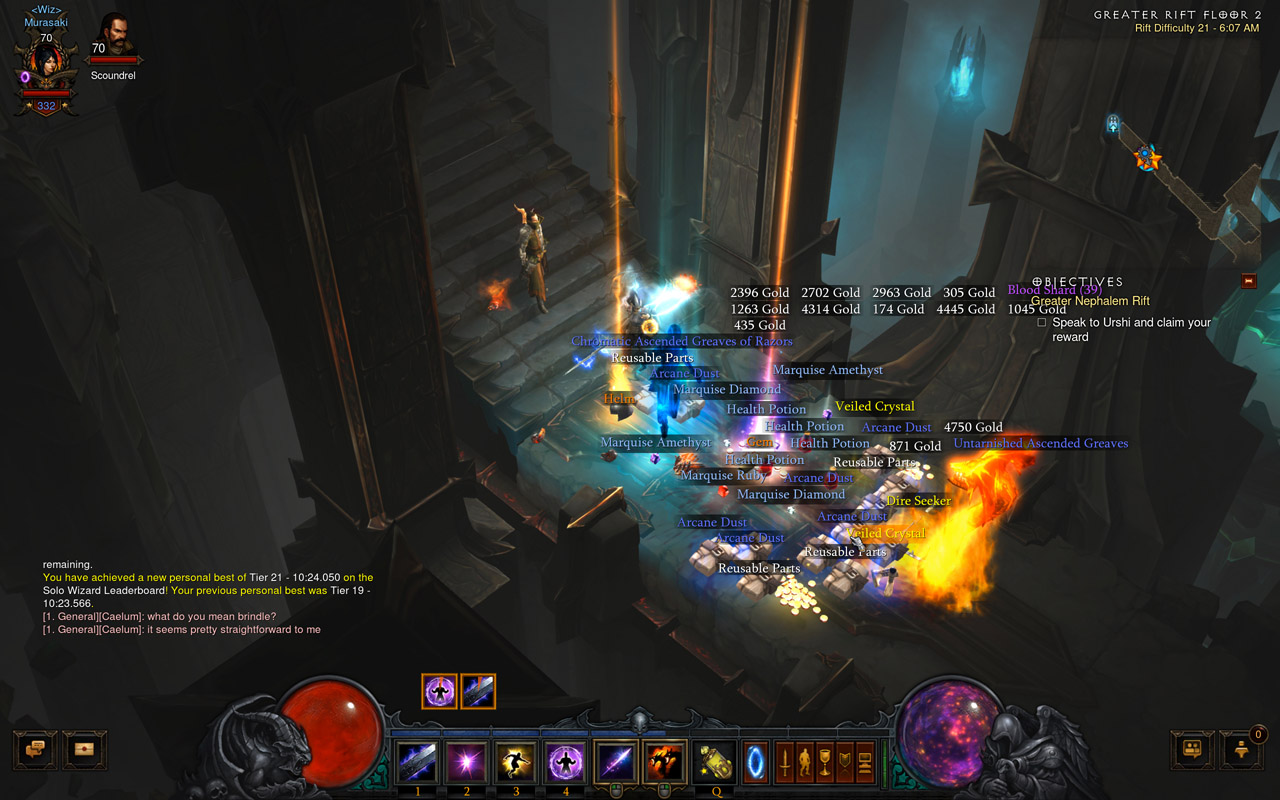As I mentioned in my previous post, this is a VIDEO GAME (and one that is primarily PVE). Balancing is fine so long as there aren’t blatant extreme outliers in terms of power/defense. But the extent they are going to accomplish this is kind of missing the forest for the trees.
Their overarching goals is akin to homogenizing every one of the character classes such that bottomline, their performance is going to be the nearly the same. Yeah, I get that – BALANCE. Sounds great on paper (but so did many of their original designs and look at most all of that has turned out; where even with Reaper of Souls, the same issues remain). I’m not saying RoS isn’t an improvement over vanilla. It is but that isn’t saying much when vanilla had so many flaws to begin with.
Some of this also contradicts their earlier stance that some classes will do certain things better than others BECAUSE that’s one way to create some sort of variability between classes. It’s meant to give players certain choices in that regard. I mean, they even mention “class fantasy” in this philosophy, and still can breath the word balance (in terms of performing within a few Greater Rift tiers of each other).
This is also missing the point completely when trying to distill all the data/statistics into this continual “tweaking of numbers” this team is hooked on. Likewise, continually making changes to underutilized class skills/runes isn’t fixing the problems per se as opposed to actually looking at the root cause as to why those skills weren’t be utilized in the first place, learning from those earlier design mistakes, and designing skills that are generally fun across the board.
Sure, that sounds vague as heck. But there have been more than enough examples given ad nauseum about how underwhelming some class skills are based on amount of resource spent for example where it is no longer fun in terms of play. A classic example is the iconic Frozen Orb. In the beginning, it was what most wizards used because there was an unintended issue with the skill with how it was dealing damage (basically it was doing more damage than it was supposed to). Using it was not just awesome, but also fun. Fixing it resulted in turning it into an okay skill that didn’t scale well as one turned up the Torment difficulty (and eventually did not justify the amount of AP spent compared to other skills). And that is just one example of taking a completely eggheaded approach as opposed to something that is more of a “what feels right” sort of approach.
Notice the phrase I mentioned in the prior paragraph; “root cause”. It’s something touched upon rather often as there were some fundamental design flaws (itemization being one of the big ones) which this same group of designers/devs, created and iterated upon with vanilla D3. These fundamental core issues still exist at the foundations of the game. Everything built and changed above it, does not address nor fix these core issues; only masks it.
So the bandaid fix is to continually tweak the numbers between all these moving parts (class skills, gear, legendary gems) based on what players are doing or even better yet with this PTR, copying actual players characters to test play themselves as part of that whole data gathering. What about the driver of those characters and varying degrees of playstyles. Simple example: I can have a pretty decent character that based on the numbers in the database, should perform at x-level. However, I as the driver can push that character really hard to the limits or play it well below those limits. Either way, the stats are skewed and not based on more normalized numbers that removes actual player playstyles from the equation (those normalized numbers can be automatically test scripted to come up with general baselines when it comes to balancing).
Like right now, I’m choosing to casually play through individual Greater Rift tiers (starting by failing the first trial waves to get as low a starting tier as possible) in order to maximize the amount of loot that I get per keystone. And I then game the system by only taking on the Rift Guardian until there is 5 minutes or less left on the clock such that I can get the next tier key. This is a great way to collect as many legendary gems as possible. See the following image sequences.
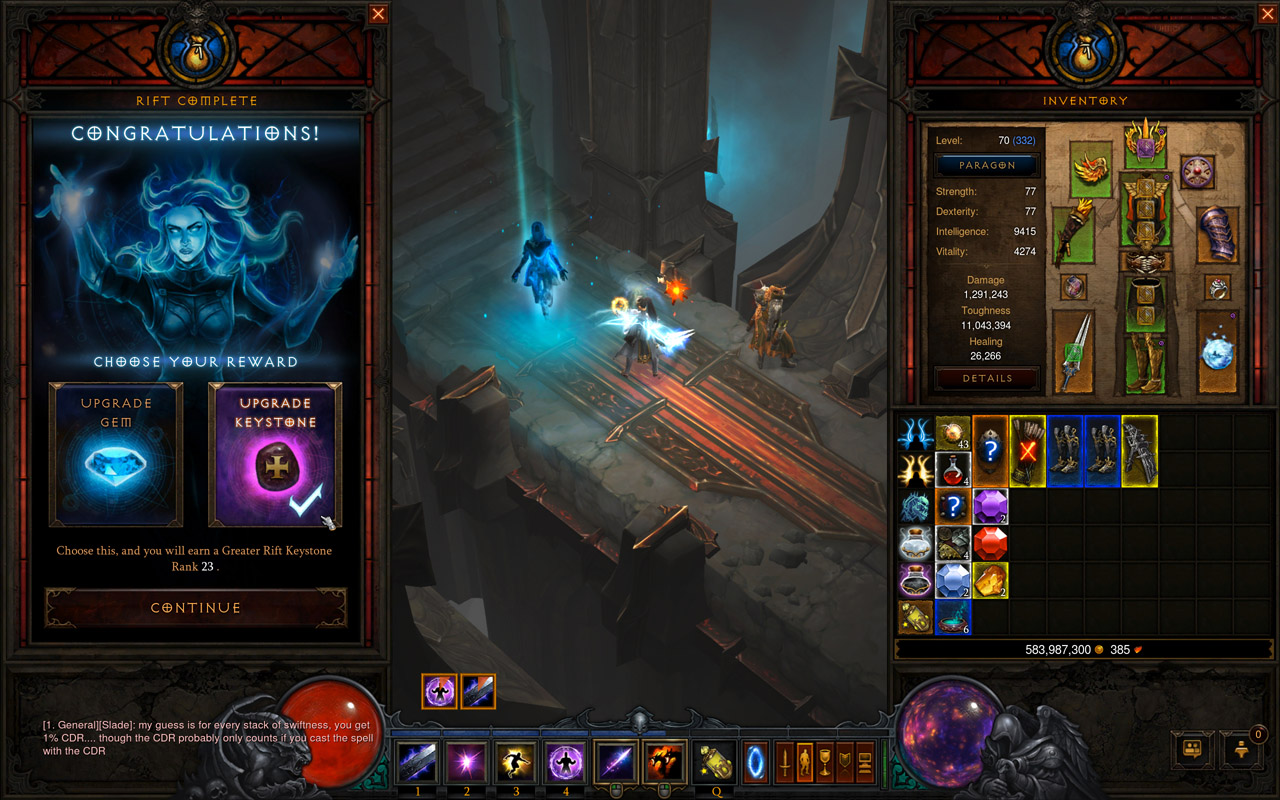 |
| Rank 23 key
The above shows how much more loot I get just between ranks 14-21. With Greater Rift ranks below 10, clearing them to spawn the GRG will always be fast where you can port out and do a few bounties to pass the time before clearing out the GRG. It also shows the effect RNG has when it comes to clearing a rift.
My rank 21 Greater Rift had a large string of elite packs packed into the first floor (which was that underground Westmarch tileset) as well as this Arreat tileset. The progression globes dropped by those packs make a huge difference. Most Greater Rifts lack this kind elite density though (or even trash mobs for that matter) which matters to those folks who are trying to get the fastest leaderboard times. Sure, at some point, I may try the challenge angle to pushing as far as possible; but not until I can at least max out my items (which is subject to the RNG gods when it comes to drops, roll ranges, enchanting, etc).
Thus once patch 2.1 goes live, I’m just going to do regular rifts (I have over 800 rift keys so I don’t have to even touch bounties for a long while) to farm for trial keys. Once I get enough trial keys, I’m just going to blow through most of them (failing the trial waves) to get a bunch of low ranked Greater Rift keys. And then I’ll be doing the above to farm gems and loot (it looks like they aren’t going to have the time to actually address this sort of play since John Hight mentioned at Gamescom that the objective was to try to get this patch out by the end of the month).
I’ve wrote about it before that it will be difficult for them to balance the rewards (loot drops) versus effort aspect of Greater Rifts unless they utilize efficacy based metrics (and there is a huge difference of designing an actual underlying system at the games core versus trying to tack it on, bandaid fix style; a specialty of the D3 team). Why? Because something that is tacked on represents another potential point of “failure” when it comes to what this design team is trying to do with balancing.
If that (point of failure) is hard to understand, take a look at the wizard class when Critical Mass was a passive skill. The bandaid fix was to continually nerf skill proc coefficients to deal with some of issues this particular passive created when it came to build diversity. When Critical Mass was removed, they never really revisited those coefficients. Remember, back in October 2012, the devs mentioned that “simple numbers tuning” was no longer the best way with dealing with the wizard class whn it came to skills synergy; this implies there were actual design issues with the class. But that is all that has been done across the board for all classes (tweaking numbers and basing most of that on statistics). Again, on paper, it sounds easy (change some numbers in a spreadsheet and go). The reality as shown in practice from vanilla until the present, is that it opens up more cans of worms in the process (and the more parts there are, the more difficult it actually becomes to keep tweaking those numbers to keep everything in check).
Knowing this team though, their bandaid fix to the above is going to be along the lines of making the lowest Greater Rifts tiers, extremely unrewarding in terms of drops, gold, and experience. And it wouldn’t matter if players purposely gimped themselves with junk gear either to simulate items not scaling well with the content. This team has enough trouble balancing within the scope of a single patch (see below); how are they going to address every potential angle (player skill selection + items) when it comes to appropriately scaling the rewards of Greater Rifts. If they take such a lazy approach, players will go and find that sweet starting spot to continually game the system from there.
Also, design iteration (hardware or software) is an ever ongoing process; this is stating the obvious. Simple example(s): Microsoft Windows 1.0 through all of its iterations to the current Windows 8. Or the original iPhone to the current iPhone 5s. I know – comparing apples to oranges here as operating system/hardware are completely different beasts to game development. But a simple fact is that these other companies deal with far more complex design iterations/industrial design/software engineering/mechanical and electrical engineering, etc, and deliver far greater results in a shorter period of time compared to the speed at which the D3 designers deal with a much smaller subset of parameters.
And there’s a reason why there is a high degree of skepticism when the devs pull the “philosophy” card. Some of us aren’t bothering to buy more of this philosophical hot air because this design/dev team hasn’t been able to actually deliver on much (OPUD = over promise, under deliver); too many systems have had to undergo this constant “iteration” because bottomline, many of their actual designs were poor once actually implemented. Lot of stuff sounded great on paper/presentation, but the actual execution and implementations were underwhelming. Actions speak louder than words.
They even say it in this posting: “Class balance is the sum of several wholes, including Skills, Set Items, and Legendaries that have been added or adjusted. That’s a ton of stuff to look at, and sometimes there’s simply not enough time to fit everything into a single patch.” <- big DUH. In other words, your original design objectives were a huge mess, you’ve been trying to dig yourselves out that huge hole (while creating new ones and digging them even deeper in the process), and have to constantly move the goal posts around under the guise of constant iteration and balancing. Yet, because these objectives are difficult to deliver in a single patch, conveniently means that it COULD potentially happen in the future, but that all of this can change as the rest of the game also evolves.
This balancing philosophy for 2.1, is yet another stab at applying a bandaid fix to some underlying core design issues which can no longer be easily fixed. This is all supposed to pave the way for better class diversity (but who the hell knows when that will happen). And for what exact purpose? To more or less have all the classes balanced in what is primarily a PVE based game so that it can make the entire PvEvP aspect of the game, seem more legitimate (and that is ironic because none of this even addresses the layers of RNG involved in large facets of the game which also have an impact on that data – see my above image sequence with regards to how much faster rank 21 was compared to 17 and 19).
They (by this, I mean the PC design team) are literally sucking out those tiny little intangibles including those things that make a Diablo game, fun <- operative word here – FUN.
|


